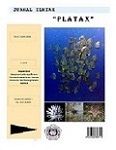Size Structure, Growth Pattern, And Condition Factor Of Red Lolosi Fish (Caesio chrysozona, Cuvier, 1830) From The Bay Of Ratatotok Subdistrict, Southeast Minahasa Tenggara District
DOI:
https://doi.org/10.35800/jip.5.2.2017.15908Abstract
The research was conducted in December 2016 in Totok Bay, Ratatotok Subdistrict, with the aim to know the size structure, growth pattern and condition factor of red lolosi fish (Caesio chrysozona). It is expected that this research can provide basic information to monitor the presence of these fish in the future, especially in the territorial waters of Ratatotok. The name of red lolosi fish is a local name in North Sulawesi. Fish with the scientific name Caesio chrysozona is commonly found around the coral reefs and shallow rocky coastal waters. Data were collected in the field by taking a random sample of fish from the catch of fishermen who are still in a fishing boat. The number of fish samples taken to be analyzed were 66. Based on the measurement of 66 individuals of red lolosi, the structure size is as follows: male (51 head) with total length of 180 mm - 259 mm, length of fork 153 mm - 216 mm, and raw length 135mm - 200 mm. While body weight ranges from 71.38 gr - 217.18 grams and females (15 fish) with a total length range of 196 mm - 243 mm, fork length of 165 mm - 209 mm, and standard length of 149 mm - 185 mm. While body weight ranges from 110.22 gr - 193.99 gr. The growth pattern of red lolosi fish both male and female is a negative allometric growth pattern (b <3) where the length of fish increase faster than weight gain. The condition factor of each individual male and female varies with the value of the male condition factor ranging from 0.8094 - 1.2547 and females ranged from 0.9668 to 1.0281. Because the value of K ranged 1 then the conclusion is that male and female of red lolosi fish have a less flat shape. This causes the loss of weight of fish due to the influence of food, age, sex and gonad maturity.
Â
ABSTRAK
Â
Penelitian dilakukan pada bulan Desember 2016 di Teluk Totok Kecamatan Ratatotok, dengan tujuan untuk mengetahui struktur ukuran, pola pertumbuhan dan faktor kondisi dari ikan lolosi merah (Caesio chrysozona).Â
Ikan lolosi merah adalah nama lokal di Sulawesi Utara, dan ditemukan cukup berlimpah di sekitar terumbu karang dan perairan dangkal yang berbatu-batu di Teluk Totok
Pengambilan sampel di lapangan dilakukan dengan metoda sampling yaitu dengan cara mengambil sampel ikan secara acak dari hasil tangkapan nelayan yang masih berada dalam perahu nelayan. Jumlah sampel ikan yang diambil untuk dianalisis sebanyak 66 ekor.Â
Berdasarkan hasil penelitian terhadap 66 individu lolosi merah, diperoleh struktur ukuran sebagai berikut: jantan (51 ekor) dengan kisaran panjang total 180 mm - 259 mm,. Sedangkan berat tubuh berkisar dari 71.38 gr – 217.18 gr, dan betina (15 ekor) dengan kisaran panjang total 196 mm - 243 mm, Sedangkan berat tubuh berkisar dari 110.22 gr – 193.99 gr. Pola pertumbuhan ikan lolosi merah baik jantan maupun betina adalah pola pertumbuhan allometrik negatif ( b < 3) dimana pertambahan panjang ikan lebih cepat dari pertambahan beratnya. Faktor kondisi setiap individu jantan dan betina bervariasi dengan nilai faktor kondisi jantan berkisar 0.8094 - 1.2547 dan Betina berkisar 0.9668 - 1.0281.
Downloads
Published
How to Cite
Issue
Section
License
COPYRIGHT
Authors who publish with this journal agree to the following terms:
Authors hold their copyright and grant this journal the privilege of first publication, with the work simultaneously licensed under a Creative Commons Attribution License that permits others to impart the work with an acknowledgment of the work's origin and initial publication by this journal.
Authors can enter into separate or additional contractual arrangements for the non-exclusive distribution of the journal's published version of the work (for example, post it to an institutional repository or publish it in a book), with an acknowledgment of its underlying publication in this journal.
Authors are permitted and encouraged to post their work online (for example, in institutional repositories or on their website) as it can lead to productive exchanges, as well as earlier and greater citation of the published work (See The Effect of Open Access).




















